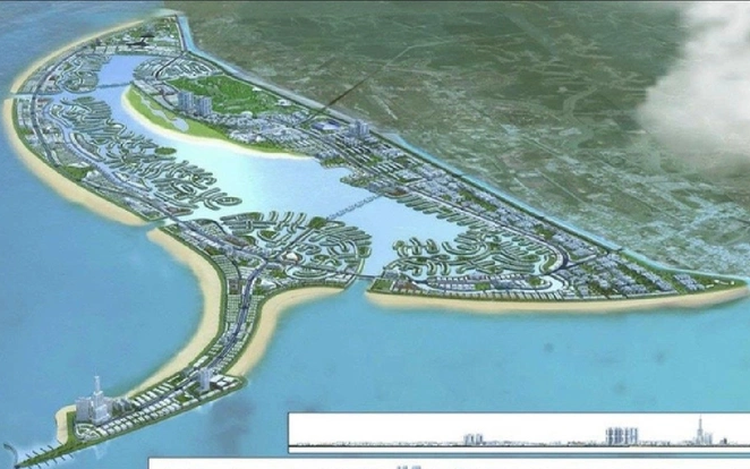
The railway line connecting downtown Ho Chi Minh City and Can Gio is expected to begin construction in November 2025. Photo: VinSpeed
At a seminar to promote green transportation connecting Can Gio with the city center held by the Ho Chi Minh City Institute for Development Studies on Friday, Nguyen Anh Tuan, general director of VinSpeed High-Speed Rail Investment and Development JSC, a newly established company under Vietnam’s largest private conglomerate Vingroup, the investor of the project, said construction is expected to be completed within 36 months.
Vingroup had earlier proposed that the project would cost over US$4 billion.
At the seminar, Le Van Khoa, technical director of VinSpeed, stated that Vingroup is focused on developing a green ecosystem and has identified railway and high-speed rail development as part of its mission to contribute to national infrastructure.
VinSpeed has proposed the 48.1-kilometer high-speed rail line running from downtown Ho Chi Minh City to Can Gio, reducing travel time to just 16 minutes.
Between 2030 and 2050, trains are expected to run every 12 minutes.
The route will include two stations: Tan Thuan Station, located on the median strip of Nguyen Van Linh Street, and Can Gio Station, situated on a 39-hectare site.
Trains used on the route will consist of eight carriages, capable of carrying 600–800 passengers.

Nguyen Anh Tuan, general director of VinSpeed High-Speed Rail Investment and Development JSC, speaks at the seminar to promote green transportation connecting Can Gio and downtown Ho Chi Minh City on August 22, 2025. Photo: Thu Dung / Tuoi Tre
VinSpeed is committed to financing the project without state funding, using privately sourced capital in accordance with the Investment Law.
Khoa added that VinSpeed is studying the construction of a cable-stayed rail bridge over the Soai Rap River along the route which will meet rail standards and ensure proper clearance.
VinSpeed general director Tuan noted that most previous railway projects in Vietnam were publicly funded, making this private high-speed rail investment unprecedented.
The project is anticipated to become a symbol of Ho Chi Minh City, offering locals and tourists a 350 km/h travel experience.
He also acknowledged expected challenges, such as constructing the rail bridge over the Soai Rap River, and assured that environmental impacts on the Can Gio Biosphere Reserve would be minimized.
Previously, the Ho Chi Minh City People’s Committee issued a document conveying vice-chairman Bui Xuan Cuong’s directive regarding the high-speed urban rail line between downtown Ho Chi Minh City and Can Gio.
The city assigned the Department of Finance to work with the investor to finalize the proposal and coordinate with the Department of Construction and relevant agencies to review regulations and propose investment procedures for privately funded urban railway projects.


Max: 1500 characters
There are no comments yet. Be the first to comment.